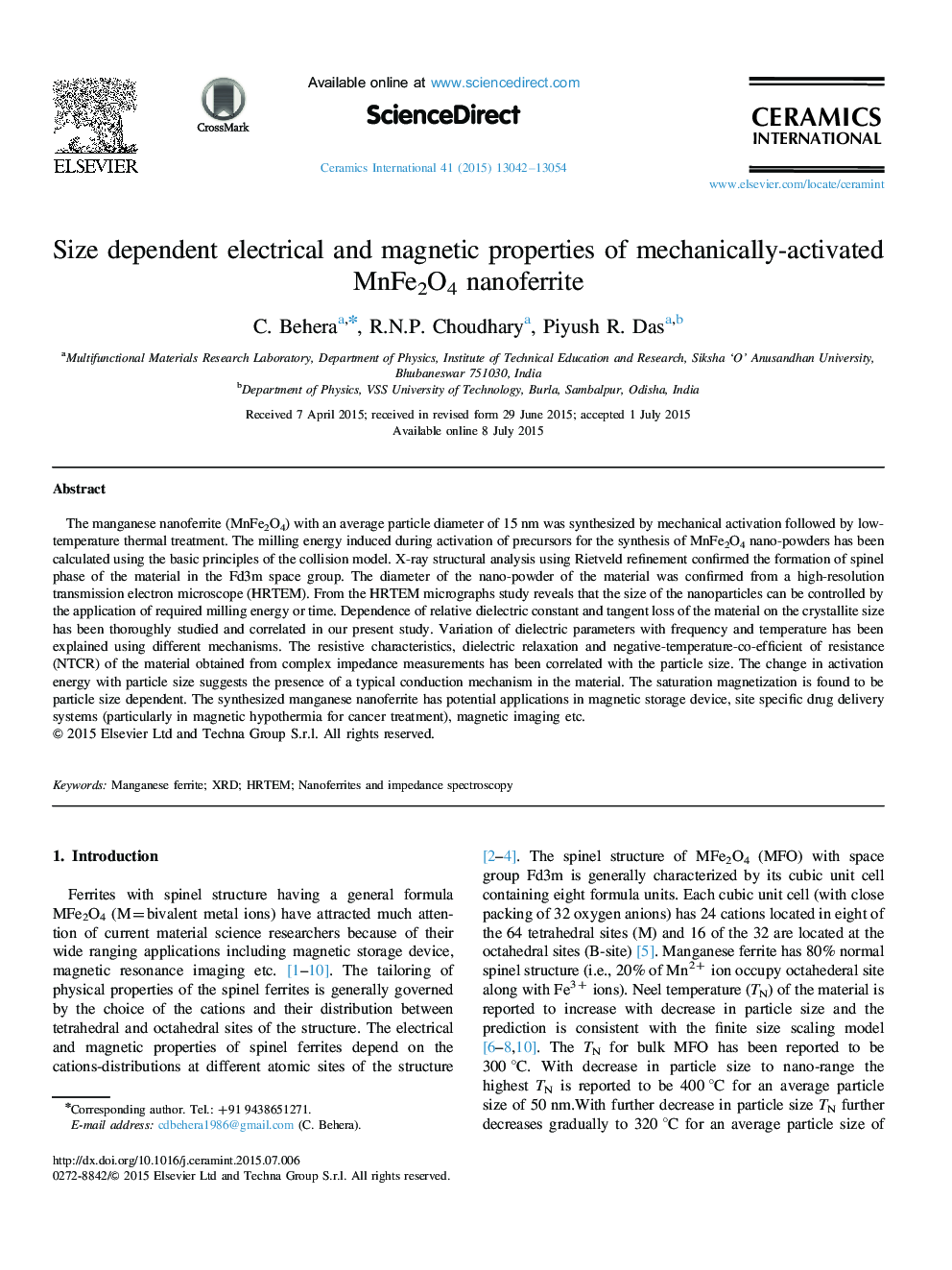| Article ID | Journal | Published Year | Pages | File Type |
|---|---|---|---|---|
| 1459671 | Ceramics International | 2015 | 13 Pages |
The manganese nanoferrite (MnFe2O4) with an average particle diameter of 15 nm was synthesized by mechanical activation followed by low-temperature thermal treatment. The milling energy induced during activation of precursors for the synthesis of MnFe2O4 nano-powders has been calculated using the basic principles of the collision model. X-ray structural analysis using Rietveld refinement confirmed the formation of spinel phase of the material in the Fd3m space group. The diameter of the nano-powder of the material was confirmed from a high-resolution transmission electron microscope (HRTEM). From the HRTEM micrographs study reveals that the size of the nanoparticles can be controlled by the application of required milling energy or time. Dependence of relative dielectric constant and tangent loss of the material on the crystallite size has been thoroughly studied and correlated in our present study. Variation of dielectric parameters with frequency and temperature has been explained using different mechanisms. The resistive characteristics, dielectric relaxation and negative-temperature-co-efficient of resistance (NTCR) of the material obtained from complex impedance measurements has been correlated with the particle size. The change in activation energy with particle size suggests the presence of a typical conduction mechanism in the material. The saturation magnetization is found to be particle size dependent. The synthesized manganese nanoferrite has potential applications in magnetic storage device, site specific drug delivery systems (particularly in magnetic hypothermia for cancer treatment), magnetic imaging etc.
